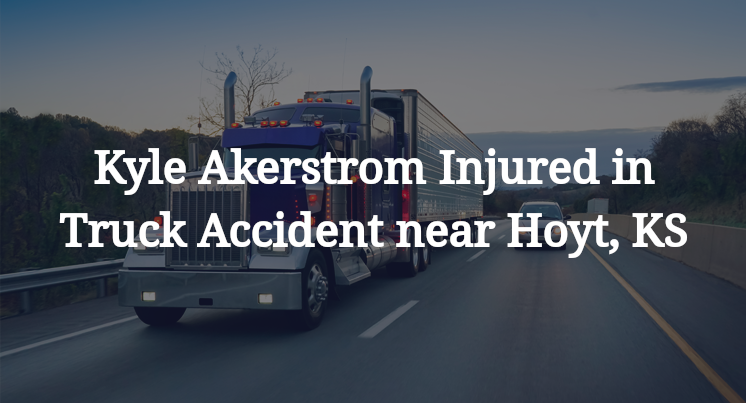Kyle Akerstrom Injured in Truck Accident near Hoyt, KS
Jackson County, KS — March 27, 2025, Kyle Akerstrom was injured in a truck accident at about 4 p.m. on U.S. Route 75 north of Hoyt.
Authorities said a Ford F-150 crashed into the back end of a southbound semi-truck while crossing U.S. 75 on 118th Road.

The driver of the pickup, 43-year-old Kyle Akerstrom of Hoyt, suffered serious injuries in the crash, according to authorities.
The semi-truck driver was not injured.
Authorities have not released any additional information about the Jackson County crash at this time. The accident is still under investigation.
Commentary by Attorney Michael Grossman
Anytime a crash involves a pickup crossing a major highway and hitting the back of a semi-truck, it invites a closer look at how visibility, timing and roadway design might have set the stage for a collision. In this case, the driver of the pickup was reportedly crossing U.S. 75 from 118th Road when the crash happened, hitting the back end of a southbound semi-truck. That’s not a common configuration for most rear-end collisions, which makes the details here all the more important.
One possibility is that the pickup driver thought they had a clear shot to cross but misjudged the speed or distance of the oncoming truck. That's a more common problem than most people realize, especially on highways like U.S. 75 where vehicles are often traveling at or above highway speeds. When crossing from a stop, even a small miscalculation in timing can have major consequences. But if that’s all there is to the story, then it becomes important to ask: was the view obstructed by anything? Trees, signage dips in the road: these are all things that routinely go unnoticed until after a crash happens.
But there’s another factor to consider: the location of the impact. Rear-ending a vehicle while crossing a highway is unusual unless the semi-truck had just passed or was slowing for some other reason. If the truck was already well into the intersection and the pickup still managed to hit its rear, then investigators need to consider whether the truck was speeding or if the pickup had mechanical issues, distraction, or even medical impairment at play. Of course, driver error is always a possibility, but it shouldn't be the assumption.
Crashes like this also highlight a larger issue with rural intersection design. Crossing major highways at uncontrolled intersections — especially ones without turn lanes, signals or lighting — puts drivers in a position where they're relying solely on their ability to gauge speed and distance with little margin for error. That’s a dangerous setup on its best day, and if the intersection is busy, poorly marked or surrounded by terrain that hides oncoming traffic, it’s even worse.
At this stage, we don't know exactly what went wrong, but the situation is another reminder that safe driving doesn't just depend on the people behind the wheel. It also depends on the roads they’re using and whether those roads are designed to give drivers a fair chance to make safe decisions.

“These are essential reads for anyone dealing with the aftermath of a truck wreck”– Attorney Cory Carlson